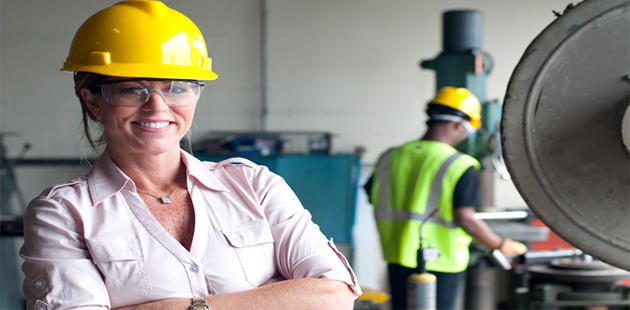Manufacturing Innovation Blog
Powered by the Manufacturing Extension Partnership

I have a confession to make. I love the show “Fast and Loud” on the Discovery Channel which features the Gas Monkey garage in Dallas, Texas. If you have never seen it, the show stars the garage’s owner, Richard Rawlings, and head mechanic, Aaron Kaufman, as they look for fixer-upper cars to (you guessed it) fix-up and sell.
It was introduced to me through a show tie-in when the Gas Monkey team was challenged to a build-off that included Jesse James and the father/son dynamic behind Orange County Choppers. The reason I call out these names is to highlight the fact that the casts on these shows are dominated by men. Women appear to only be supporting members of the families and not involved in the builds.
That changed recently on an episode of “Fast and Loud” when a young woman that modeled for the garage told Richard that she was an experienced welder and was given a chance to show her skills on camera. At the same time a fact popped up on the screen that only 2.5% of all working women in the U.S. are in manufacturing jobs. This really surprised me. Working for NIST MEP, I have had the opportunity to tour a number of manufacturing facilities and I often see women working in this industry. In addition, everyone that has seen “A League of Their Own” knows how during World War II, women went to work in manufacturing jobs when the men were drafted into war. And don’t forget Laverne and Shirley who worked as bottle cappers at Shotz Brewery in Milwaukee! I decided I needed to do a little research about women in manufacturing careers.
Turns out women are not that heavily involved in manufacturing. As the nation continues its economic recovery, women are not sharing in the gains being made in the manufacturing sector jobs. Women’s share of factory jobs rose steadily in the 1960’s, 1970’s and 1980’s, peaking at just under a third — 32.2% — in the early 1990’s. Since then, their share has dropped just as steadily, falling in 20 of the past 21 years. Women held 27.3% of manufacturing jobs in 2012, the lowest level since 1971 (Casselman, 2013). This explains why all of my references are so dated!
Another fact is that manufacturers are having a hard time finding skilled workers, and to bring jobs back from overseas and compete globally we need skilled workers. Manufacturing is seeing some of the biggest advancements in years and while the jobs previously held predominantly by women are changing due to automation, there lies the opportunity for new ones. Getting women involved in manufacturing can help fill gaps in the workforce seen all across the country and bring new skill sets to companies. Infusing changes into the workforce can help the workforce shortage and even spark new ideas.
One last confession before I leave you. Years ago I worked for a manufacturer that made small motors and my job was to hook 4 wires into the casing for a ceiling fan motor. That was it. You would think this would be the easiest job but I looked like Lucille Ball when she was working the conveyor belt in the candy factory. I understand how much manufacturing has changed in just 20 years but only because I’ve had a front row seat. When women think of future manufacturing careers they should see computers and innovation. Changing the stereotypes of manufacturing has already begun and I would love to see the role of women in manufacturing be one of those that is also changed forever!
About the author
Related Posts
Comments
- Reply

